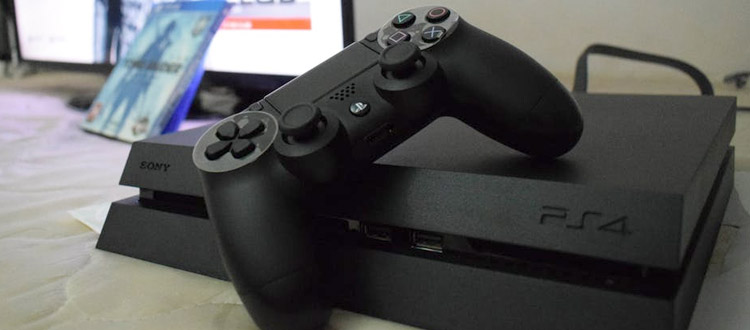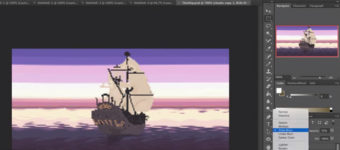What is a Video Game Designer?
Game designers are responsible for planning a game’s central concepts and mechanics. The theme, story, world, controls, and rules that define a game are all created by a game designer in the early stages of a video game’s development.
Before a single pixel is drawn or a line of code is written, game designers will be hard at work planning the features and gameplay that make up the world.
Because of the extensive nature of their role, game designers will often have a diverse background spanning many fields.
Most designers will focus on writing and artistic direction, spending their time developing the narrative and theme of the game.
In some cases game designers will have a background in programming as well. This is great because it’s important that designers understand the capabilities of the hardware and software the development team will use.
For example, game designers need to accommodate for the limitations of the device, console, or engine that the game will run on.
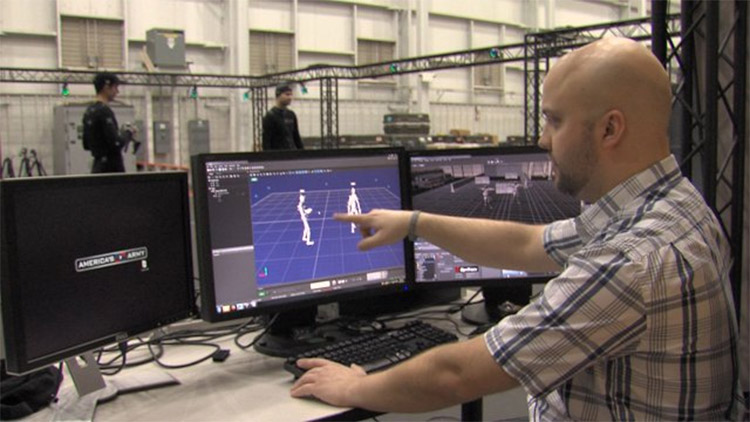
To ensure the game runs smoothly they’ll also need to be familiar with the software and platforms used to develop the game.
A game designer often provides the initial creative spark for a game. In this sense, you can think of them as serving the role of movie director or screenwriter(or a combo of both).
For most games today, the design process is handled by a group who share the tasks of creating everything that will define the video game.
When a game doesn’t call for an extensive storyline and significant characters, the designer will focus on the gameplay, rules, and general aesthetics of the project. The game designer will be responsible for ensuring that the game is fun and appeals to the target audience.
A competent game designer will combine a comprehensive artistic vision with detailed technical skills and level design to oversee all aspects of the game development process.
What Does A Game Designer Do?
While designers are responsible for creating the defining elements of a game such as the story, characters, levels, and the world, they also need to understand how games function to form an enjoyable experience.
If a game designer does their job well, players will find themselves immersed in a virtual world naturally. The game will be intuitive and easy to understand by design.
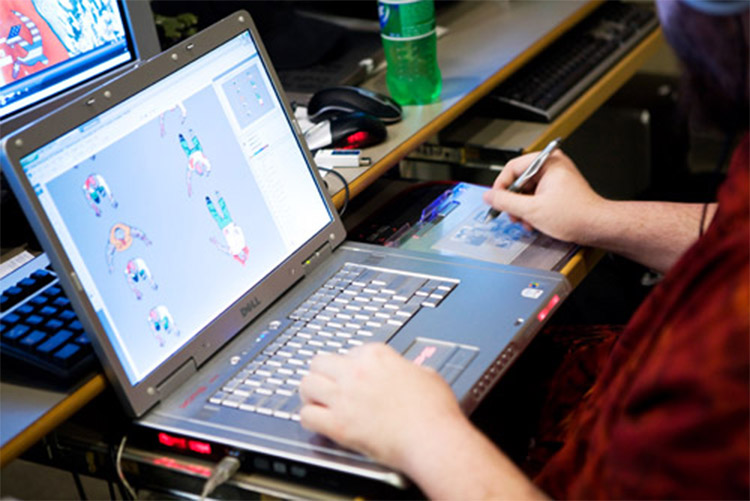
In this way, good game design is almost invisible while bad design sticks out like a sore thumb.
Game designers put a lot of time and effort into the seemingly obvious choices that make games feel good to play.
Game designers often start with the game loop. This is the most central aspect of a game.
It is the 30 seconds or so action loop that will define the gameplay. For example, in Minecraft the game loop consists of mining blocks, picking up blocks, and placing blocks.
Or in Halo the game loop is shooting, jumping, and reloading.
Good designers spend a lot of time perfecting the game loop. If the game loop isn’t fun then everything else—including the story, characters, and theme—will fall flat.
Some games, like Flappy Bird, are little more than a simple game loop. So there’s always variation.
After a period of initial research the game designer(s) will put together a Game Design Document or GDD.
This document will lay out the structure of the game and include any relevant details such as the story, mechanics, characters, and setting. The Game Design Document will also contain artistic elements and concept art describing the visual style and atmosphere desired in the final game.
The GDD serves as the foundation which guides the developers and artists as they build the game.

They all rely on the GDD with further oversight from the designers to breathe life into the concepts that eventually make up the finished project.
Designers are also concerned with the concept of feedback.
In game development, feedback is the interactive loop between the player input and the game.
Feedback is important for creating a powerful gameplay experience.
An example of feedback would be firing a gun in a first-person shooter. To give the player a strong sense of integration, the gun might show a recoil animation, a muzzle flash, and play a gunshot audio effect.
Without these elements, firing the gun would be hollow experience.
During development it’s possible that game designers may adjust the original aspects of a game, either because of limitations or to accommodate new developments in gameplay or artistic direction.
Because of the dynamic nature of game design it’s an ongoing process.
Designers need to be flexible and ready to make creative changes fast to produce the best quality product with the resources available.
Game Designer vs. Game Developer
While game designers lay the foundation for a game and describe its rules, it is the job of game developers to bring those ideas to life.
In the simplest terms, the game developers are those who build the game and create its assets.
The developers include the programmers, concept artists, 3D modelers, animators, and sound designers who craft the finished product.
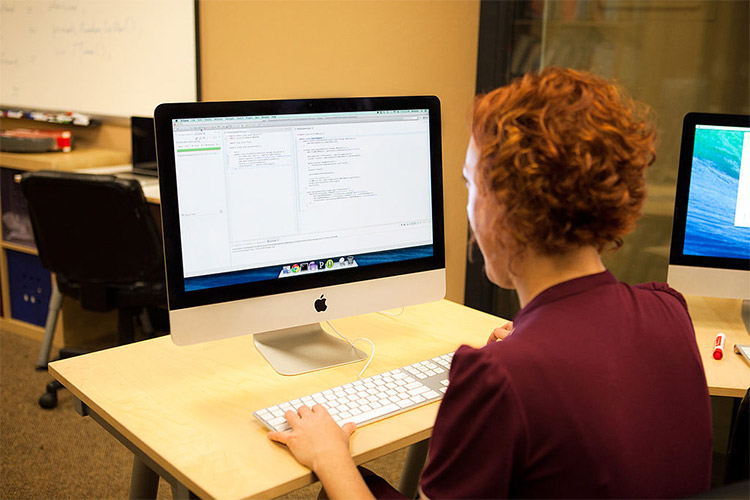
They work alongside the design team to craft the features described in the Game Design Document.
Game designers are focused on ‘big picture’ problems like the marketability and the overarching narrative of a game.
Game developers, on the other hand, work on the individual features that make up a game.
The developers are responsible for fleshing out the details and creating an actual game from the designer’s specifications. How should you render a tree properly to make it fit with the game’s style? That’s the developer’s job.
Just because developers work from a design template doesn’t mean that their job lacks creativity.
On the contrary, developers are usually encouraged to expand on the GDD.
As the game is developed alterations to the original design can be incorporated back into the final project.
If a developer has a good idea that time and budgeting allows for, the design team may choose to adjust their original concept to accommodate for the changes.
What really matters is making a final game that’s the best it can be.
In smaller studios game designers may also be the game developers, double for newer startups or indie studios.
But it’s much more common for these roles to be separate and dispersed across teams in midsize-to-large studios.
How To Get Started With Video Game Design
A good game designer needs a wide array of knowledge.
Not only do they need an intimate knowledge of the video game market and the design principles that make for an effective gaming experience, but they also need training as an artist, writer, and game developer(in some manner).
It’s important that game designers have a knowledgeable background so they can accurately plan games and achieve the results they set out to make.
It’s not enough to simply bring an idea to a group of developers and casually say “make this.”
Designers need a detailed understanding of how all the different parts of game development come together to achieve the final product.
The best way to get started as a designer is to play video games and pay attention to how they function on a deeper level.
Get acquainted with the strategies that other game designers use to create the pacing and reward systems. Keep these in mind as you think up your own ideas for games.
And the next step really is to start making your own games.
With today’s technology this has never been easier.
Software like Unity3D, Godot, the Unreal Engine, and GameMaker Studio have lowered the bar of entry so that beginners can get started making their own games with little to no experience.
Start by making simple games and familiarizing yourself with the process of game development.
The best way to learn is to make a lot of simple game prototypes and experiment.
Too often, beginner game designers set out trying to make their dream game from the start. It’s best to set small, attainable goals and complete simple projects.
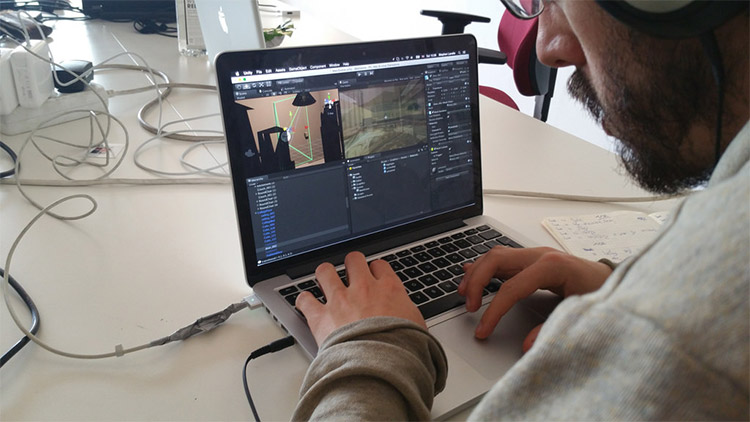
It’s also a good idea for beginning game designers to do game jams. These are contests where game developers will create games in a short span of time.
Game Jams like Ludum Dare attract thousands of developers and are a great way to iterate through ideas and get critical feedback on your work.
Doing lots of small projects will quickly sharpen your design skills.
It’s very important to learn to incorporate constructive criticism into your design process early on.
Professional designers will do extensive testing on their prototypes to find any flaws in their ideas and ensure that a game is worth pursuing before they move on to the development stage.
Developing video games is time intensive and expensive so it’s important that designers hammer out the details and find issues early.
This doesn’t mean that the game can’t change during development, but it’s up to the designer to make sure a game is fun and interesting before spending resources on what may turn out to be a terrible game.
Just know that game designers are integral to game development.
Without their creative vision the programmers, artists, and other developers wouldn’t know what to build. Good designers will bring together an extensive knowledge in the fields of art, programming, and storytelling to describe the worlds they hope to create.
And thanks to many new tools and beginner friendly game engines, there’s never been a better time to get started designing and developing games.
If this is a career you are interested in I would suggest downloading a game engine and finding a game jam to hone your skills. Game design is a challenging, creative, and rewarding career path that’s very well suited for artists and programmers alike.


